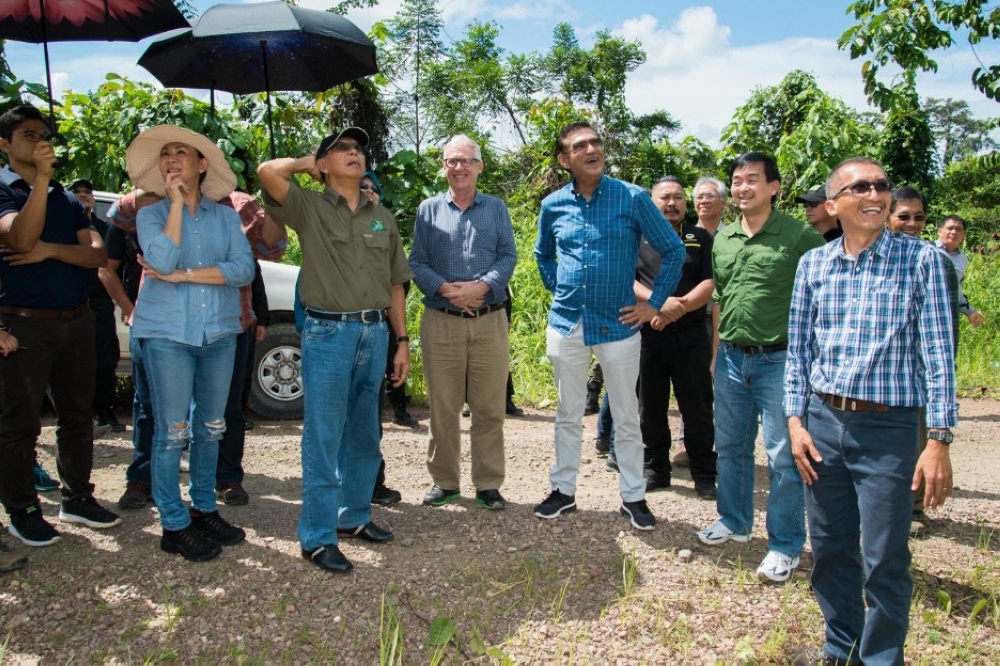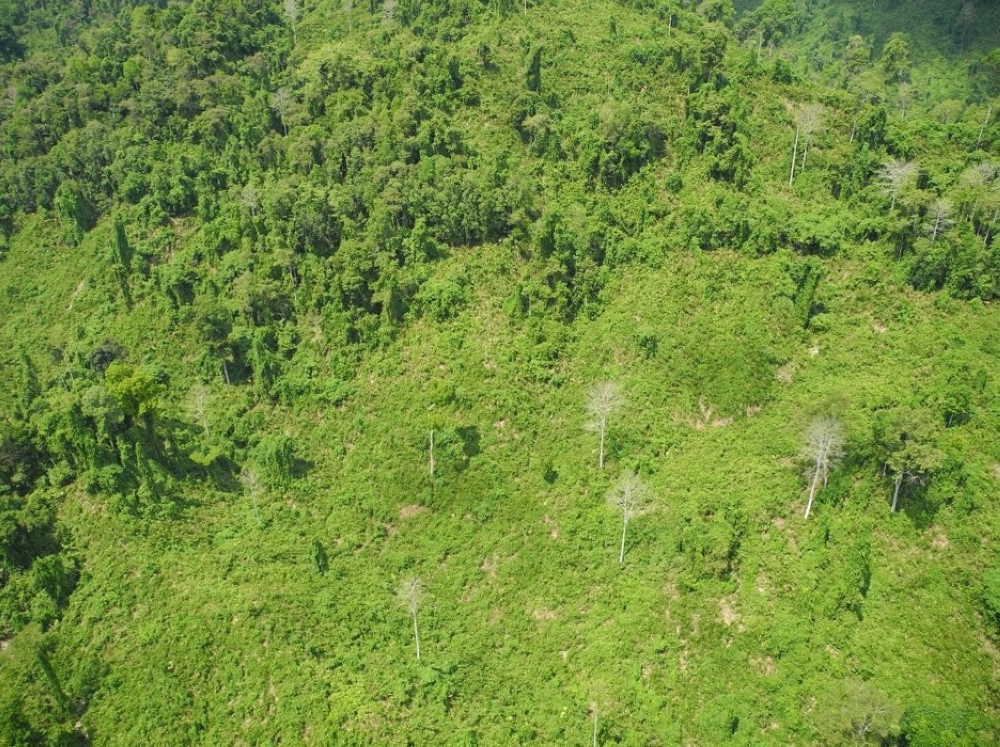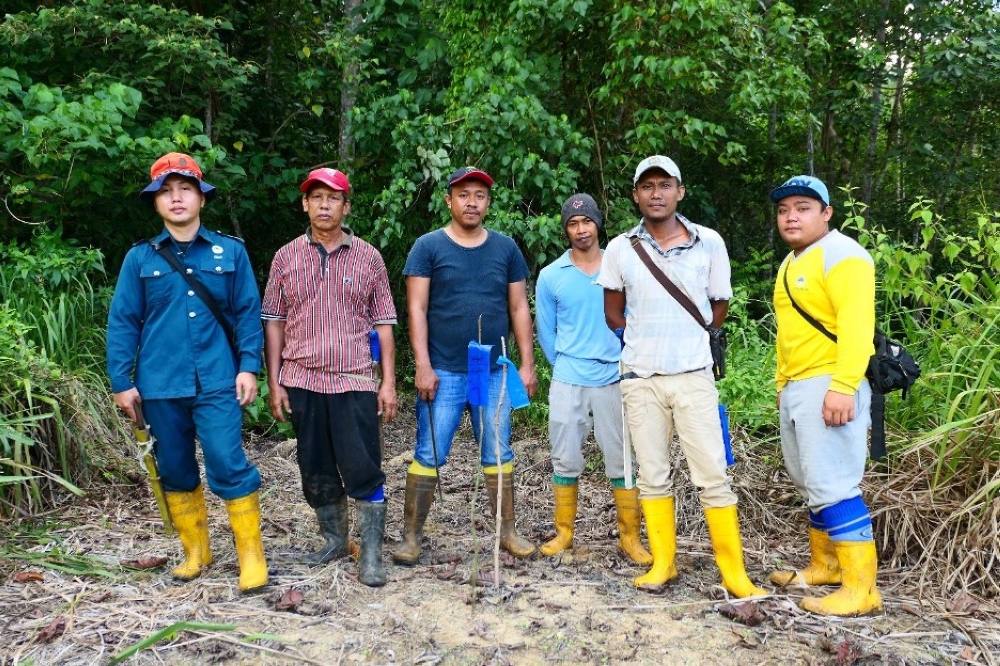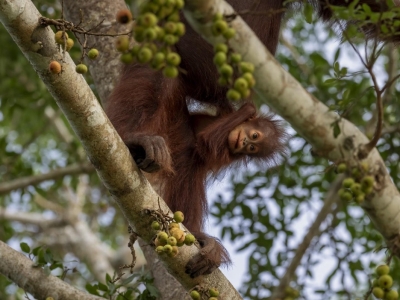KUALA LUMPUR, Sept 30 – Sabah’s 11,612-hectare (ha) Bukit Piton Forest Reserve is now a sanctuary for orangutans, but it was not always the case.
Formerly known as the Northern Ulu Segama and part of the Ulu Segama-Malua Forest Reserve, Bukit Piton was badly degraded back in the early 2000s, suffering from the impact of forest fires and timber harvesting.
In response to this, the Sabah Forestry Department (SFD) and SD Guthrie Berhad (SD Guthrie) launched an ambitious forest restoration initiative in 2008, targeting 5,400 ha of highly degraded forest where orangutans lived.
The commitment to the restoration of this valuable area was bolstered by a strategic partnership with Yayasan Sime Darby (YSD) in 2010. This is also part of SFD’s work with several other partners to rehabilitate the remaining area.
This initiative was crucial in transforming a landscape into a thriving orangutan habitat in just 15 years, something that might have taken a century to rehabilitate if left on its own, highlighting the impact of collective commitment and strategic investment.
YSD and SD Guthrie’s involvement also enabled the SFD to reclassify the area to a Class I Protection Forest Reserve called the Bukit Piton Forest Reserve, from its original status as Class II Commercial Forest Reserve.
This means the area is now fully protected from potential encroachment or redevelopment activities, meaning the land cannot be converted for other purposes.
Over the years, the successful project has led to the return of orangutans to Bukit Piton Forest Reserve.
This resurgence is evidenced by the increasing number of nests observed, which contributed to an estimated population of 400 orangutans in the area, part of a broader estimate of 3,500 to 4,000 individuals across Sabah.
According to a survey conducted by WWF-Malaysia in 2014, orangutans were found not only in natural canopy-covered areas but also in rehabilitated sites that were once barren and overrun by weeds.
About half of the survey segments in the reserve had already exhibited a high abundance of orangutan nests, including sightings in newly planted areas, marking a significant progress in the region’s ecological recovery.
From the outset, SD Guthrie was instrumental in ensuring the effective implementation of rehabilitation efforts. Experts from SD Guthrie’s sustainability and upstream teams were involved with SFD from the very early days, to design the project.
The Project Steering Committee (PSC), comprising representatives from SFD, SD Guthrie, YSD, and other stakeholders, including the Sabah Foundation, Sabah Wildlife Department, and WWF-Malaysia provided strategic oversight, with regular assessments and audits to monitor progress and address operational challenges.
The project involved experienced forest rangers, public workers, and local contractors, many from the Segama community.
They were responsible in planting and maintaining dipterocarp and non-dipterocarp trees that now support not only orangutans but also other endangered species like banteng, clouded leopards, sun bears, and pygmy elephants.
Collaboration was key to the swift success of the exercise. These partnerships facilitated information sharing on tree-planting methods suited for orangutan habitats and addressed the large challenges of manpower resources, unpredictable weather, and wildlife disturbances.
SD Guthrie’s Group Managing Director Datuk Mohamad Helmy Othman Basha noted that the more than a decade long collaboration to restore Bukit Piton underscores SD Guthrie’s commitment to orangutan conservation. “This long-standing collaboration has shown that when organisations work together, meaningful progress in restoring natural habitats and protecting endangered species can be realised,” he said.
“I thank everyone involved, whether behind the scenes or on the frontline, for their unwavering dedication. Your efforts make a real difference, and we remain committed to practices that benefit both the environment and communities around us,” Mohamad Helmy added.
The initiative saw YSD and SD Guthrie contribute a total of RM25 million aside from SD Guthrie’s manpower resources on the ground throughout the project period, directly supporting the restoration of the 5,400 ha of Northern Ulu Segama.
Today, this area has been rehabilitated with 300,000 trees planted with more than 95 species such as indigenous dipterocarps, non-dipterocarps, pioneers and fruit trees – and the orangutans’ habitat restored.

YSD’s former Chairman Tun Musa Hitam (second from left) and SFD’s former Director Datuk Sam Mannan (third from right) viewing orangutan nests on the trees planted since 2009 under the project. — Picture courtesy of YSD

Aerial shot captures the extent of degradation that prompted the critical reforestation initiatives in Bukit Piton. — Picture courtesy of YSD
Beyond the positive impact on orangutan populations, the Bukit Piton initiative also benefited 30 community members living along Sungai Segama.
They were provided with employment opportunities stemming from the reforestation efforts, facilitated by SD Guthrie, while community-based programmes helped to increase their awareness of the need to conserve forests.

Sabah locals employed in the reforestation project that helps protect their natural heritage and provide sustainable livelihoods. — Picture courtesy of YSD
Building on its success, YSD is advancing the Human-Orangutan Coexistence project to support the peaceful coexistence of wild orangutans in human-altered environments.
In collaboration previously with PONGO Alliance and currently with the South East Asia Rainforest Research Partnership (SEARRP), they will continue to monitor an existing 20,000 ha in Kinabatangan, which is located in the eastern part of Sabah and is part of the SD Guthrie’s Sandakan Division.
They will also expand scientific monitoring to cover an additional 10,000 ha in other parts of Sabah including Sugut and Ulu Segama.
As part of this initiative, 80 ha in Kinabatangan have already been restored, with 4,000 trees from native species planted to create safe habitats and vital linkages for orangutans.
Additionally, the project focuses on capacity building for local researchers by offering scholarships, training, and hands-on experience to ensure long-term, sustainable conservation efforts.
“It is important to ensure humans and wild orangutan populations co-exist for many generations to come,” said YSD CEO Dr Yatela Zainal Abidin.
“It is heartwarming to see orangutan nests in the thriving trees we planted together in Bukit Piton, and our Best Management Practices adopted in plantation estates, fostering harmony with orangutans. We are strengthening our commitment to orangutan conservation by celebrating all that we have achieved, and all that we intend to achieve in the future.
“We are grateful for the support of our donor, SD Guthrie who not only funds our projects but also contributes important resources on the ground. Together with all collaborative partners, we are setting new standards in wildlife protection that we believe will inspire similar success stories across the globe,” she said.
In a related initiative to complement the efforts in creating orangutan sanctuaries, YSD is supporting wildlife protection through a RM3.8 million sponsorship for the Sabah Wildlife Department’s Rapid Response Teams (RRT) from 2022 to 2025, enhancing efforts to combat wildlife poaching and illegal trade in Sabah.
This initiative follows YSD’s previous support for the expansion of the Sabah Forestry Department’s Protect Unit. The RRT comprises specially trained rangers recruited across Sabah to reduce wildlife crimes.
Additionally, YSD is collaborating with the Tropical Rainforest Conservation and Research Centre (TRCRC) to germinate over 35,000 seedlings of endangered tree species for forest restoration, and with Universiti Malaysia Sabah to restore 102 ha of forest and improve wildlife habitats in Sandakan Bay.
YSD has supported 19 projects since 2010 through funding amounting to RM96 million in Sabah.
This is part of a larger RM210 million directed towards environmental conservation across Malaysia. These initiatives span forest rehabilitation, species conservation, environmental education, anti-poaching efforts, the development of State Action Plans for the Proboscis Monkey, Banteng, and Clouded Leopard, with another plan underway for the Hornbill.
YSD’s commitment to environmental conservation in Sabah showcases a holistic approach to preserving biodiversity while fostering sustainable community development.
By integrating efforts in forest rehabilitation, wildlife protection, and environmental education, they not only safeguard endangered species but also sets a benchmark for long-term environmental management across Malaysia.

